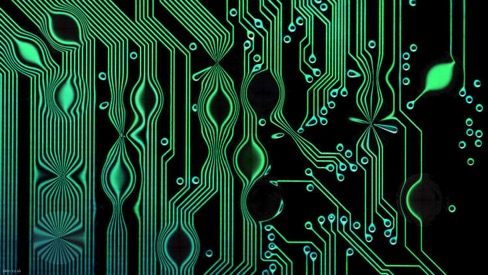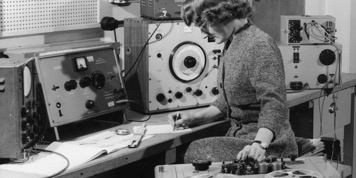Sep 02, 2014 03:58 PM Filed in:
How Things Work
"I don't appreciate avant-garde, electronic music. It makes me feel quite ill."
Ravi Shankar
Circuit-Bending
In 1967, a freak occurrence led to an entire genre of music making. Reed Ghazala haphazardly threw a cheap 9-volt toy amplifier into his metal desk drawer. The back had been taken off and the power was on. The circuits in the back shorted with the metal and created bizarre and freakish sounds. Most of us would have grabbed the amp, turned it off, and thought nothing more of it. But Ghazala, being a musician and experimental visual artist, was already thinking outside the toy box. He experimented with the circuitry by placing his fingers, and other electronic components later on, around the circuit board and changing the sounds. Ghazala's teenage enthusiasm for his poor-man's noisemaker was also fueled by the fact that the best synthesizers at the time cost upwards of $250,000.
Electronic instruments are often modified for predictable results, like altering an effects pedal or keyboard. Theses mods are shared with enthusiasts so they can get the same result. Circuit-benders prefer to create unique mods by self-discovery. They often use cheap toys to experiment with, like plastic amplified guitars and all-in-one keyboards. Look around a circuit-bender's room and you'll find toy musical instruments, games, and other cheap electronics with no backs, wires clipped to circuit boards, and volume pots hastily soldered onto the back.
There was similar experimentation going on at the time in BBC's Radiophonic Workshop. Created in 1958, Daphne Oram and Desmond Briscoe wanted to create electronic sounds and musique concrete, just like the French broadcasters were doing (those Limeys and Frogs are always trying to outdo each other). Originally pieced together with electronic equipment leftovers, that tradition would prevail over the next 34 years. Any crazy, wacky, insane way to modify equipment to get a unique sound was the order of the day. Most of the music and peculiar sounds in the original
Dr. Who and
Hitchhiker's Guide to the Galaxy came out of this studio.

The "Wobbulator"
One strange edict that was mostly followed during RW's tenure was the three-month rule. During its formation, a board of directors was appointed to oversee the studio. One board member had a concerned doctor friend that, out of concern for their health in this unconventional workplace, suggested that no one work there longer than three months. Ironically, Daphne Oram, who came up with the idea of the Radiophonic Workshop, was the first victim of the rule. But the steady influx of fresh musicians and engineers kept the ideas fresh for years.
By 1992, organization-wide budget cuts closed the studio. Now it would be accountants instead of lunatics that would run the asylum, they said. Thank goodness for lunatics.
Find out more about the famous Radiophonic Workshop here.
Take a tour through the former Radiophonic Workshop studios with a former lunatic here.
Did You Know?
- The 3-month rule at the Radiophonic Workshop didn't apply to everyone. Co-founder Desmond Briscoe was allowed to remain on and manage the department.
- Dick Mills is the longest surviving member, working from 1960 until 1993. He has the most Dr. Who credits and is a popular draw at Dr. Who conventions.
- Woman had thought they made strides in the workplace during and after World War II. They did for a while, though by the late 1950's the male-dominated workforce went back to old ways.
- There were several women composers of note that went through the Radiophonic Workshop. These include Daphne Oram (co-founder), Delia Derbyshire (Dr. Who composer), and Maddalena Fagandini (who succeeded Oram and went on to be a successful TV producer).
Tech Notes
For you
Dr. Who fans, the voice of the Dalek is an iconic audio signature. Dick Mills and Roger Hodgson created the sound by using an early transformer ring modulator.

They experimented with distortion and modulation frequencies until they settled on a 30Hz (30 cycles-per-second) tone to vibrate the voice. During the taping of each episode, an actor had to stand off stage and deliver the Dalek lines through the modulator. A tape recorder playing that 30Hz tone was blended with the actor's voice in order to get the effect. Sometimes the tape would be played back at the wrong speed, thus altering the sound of the Dalek's voice. This only added to the campiness and appeal of Dr. Who.
Neil Kesterson






